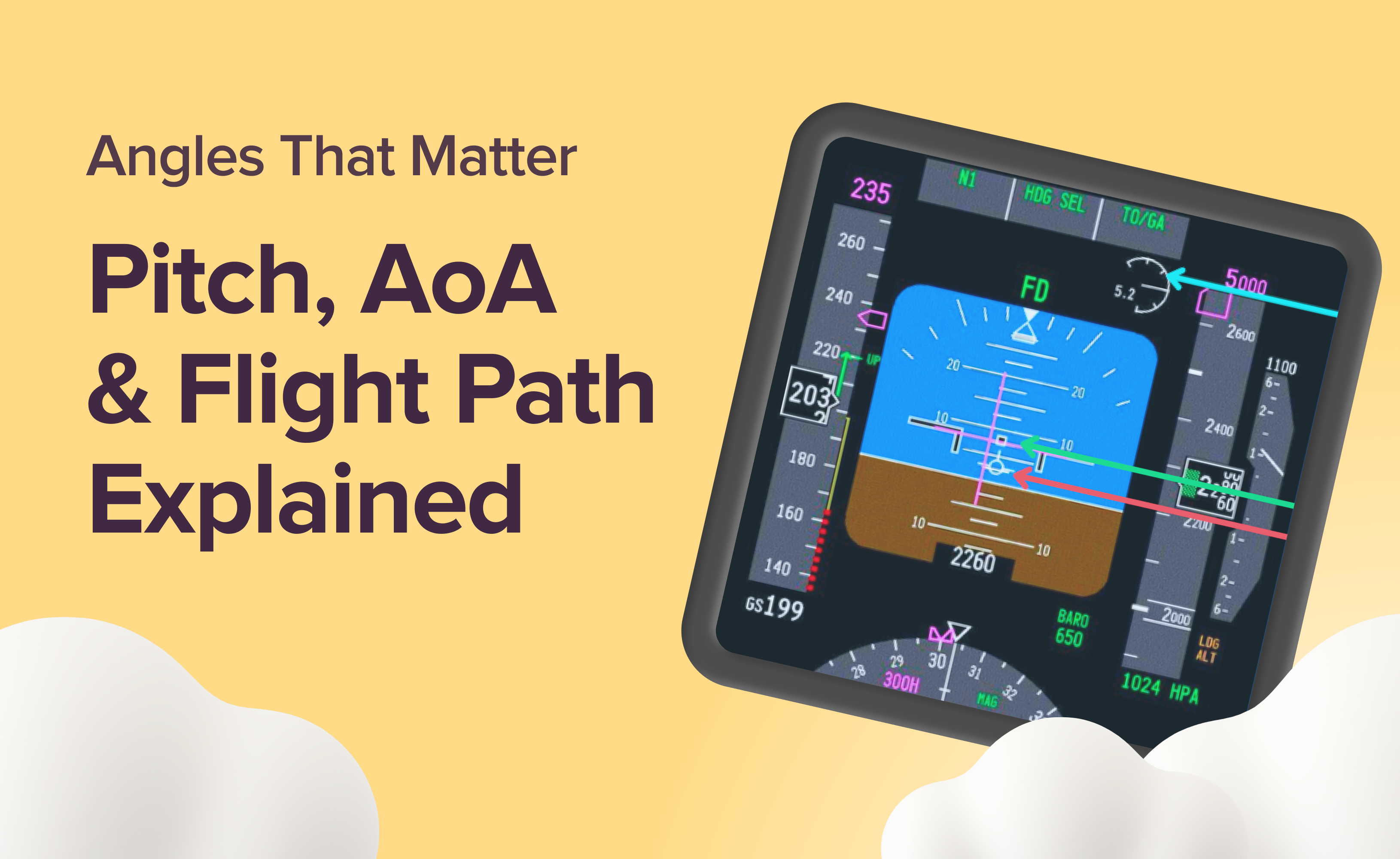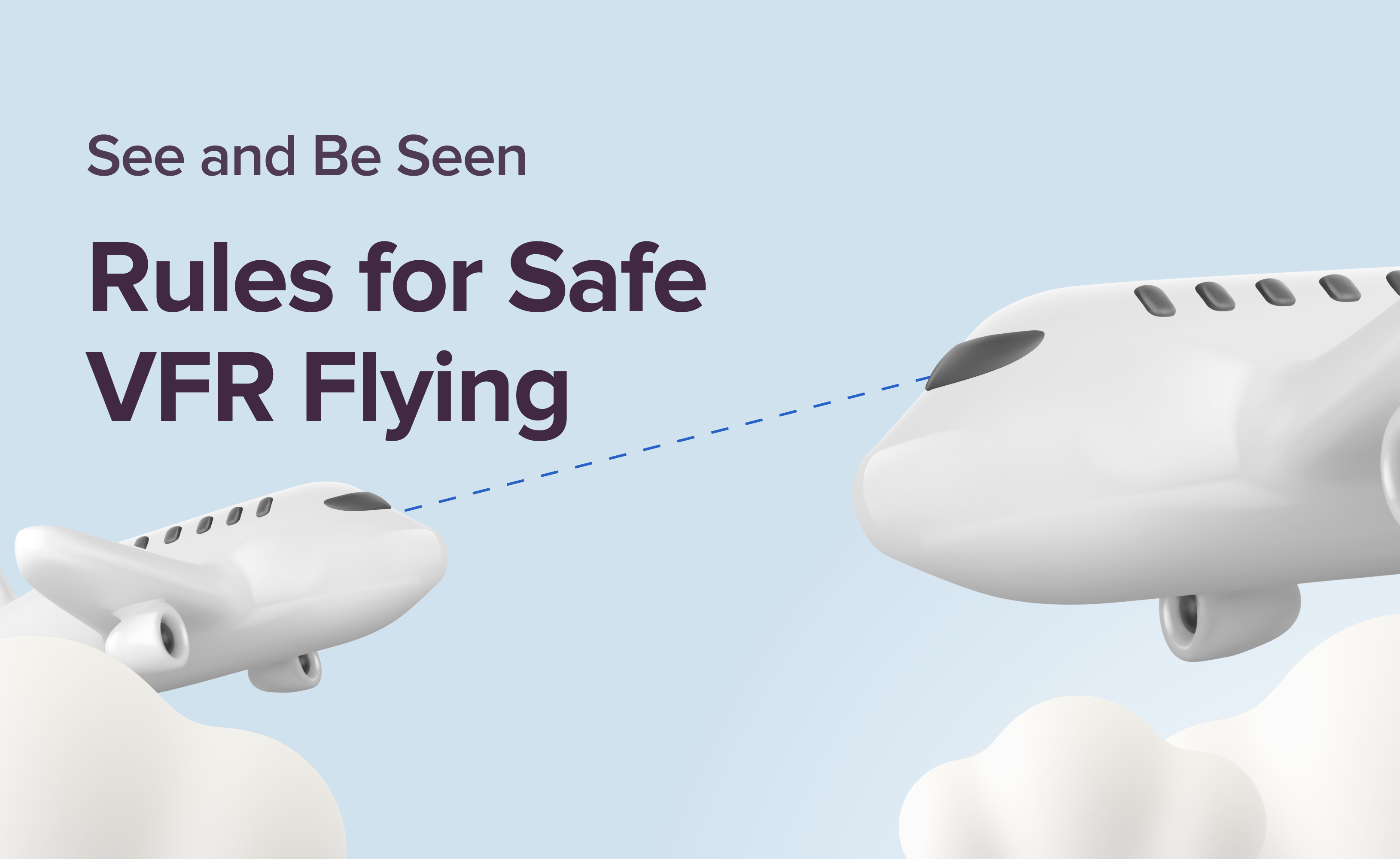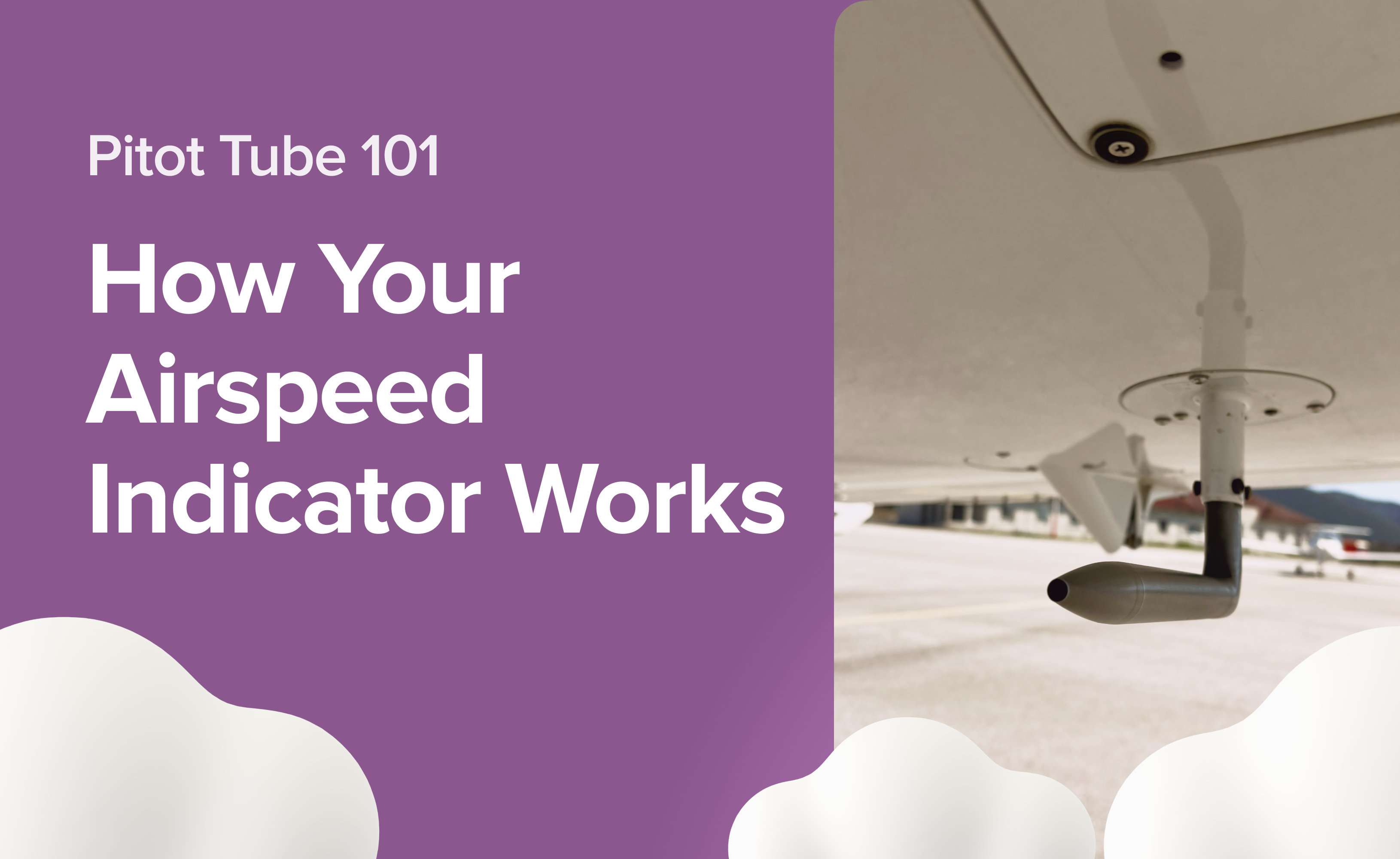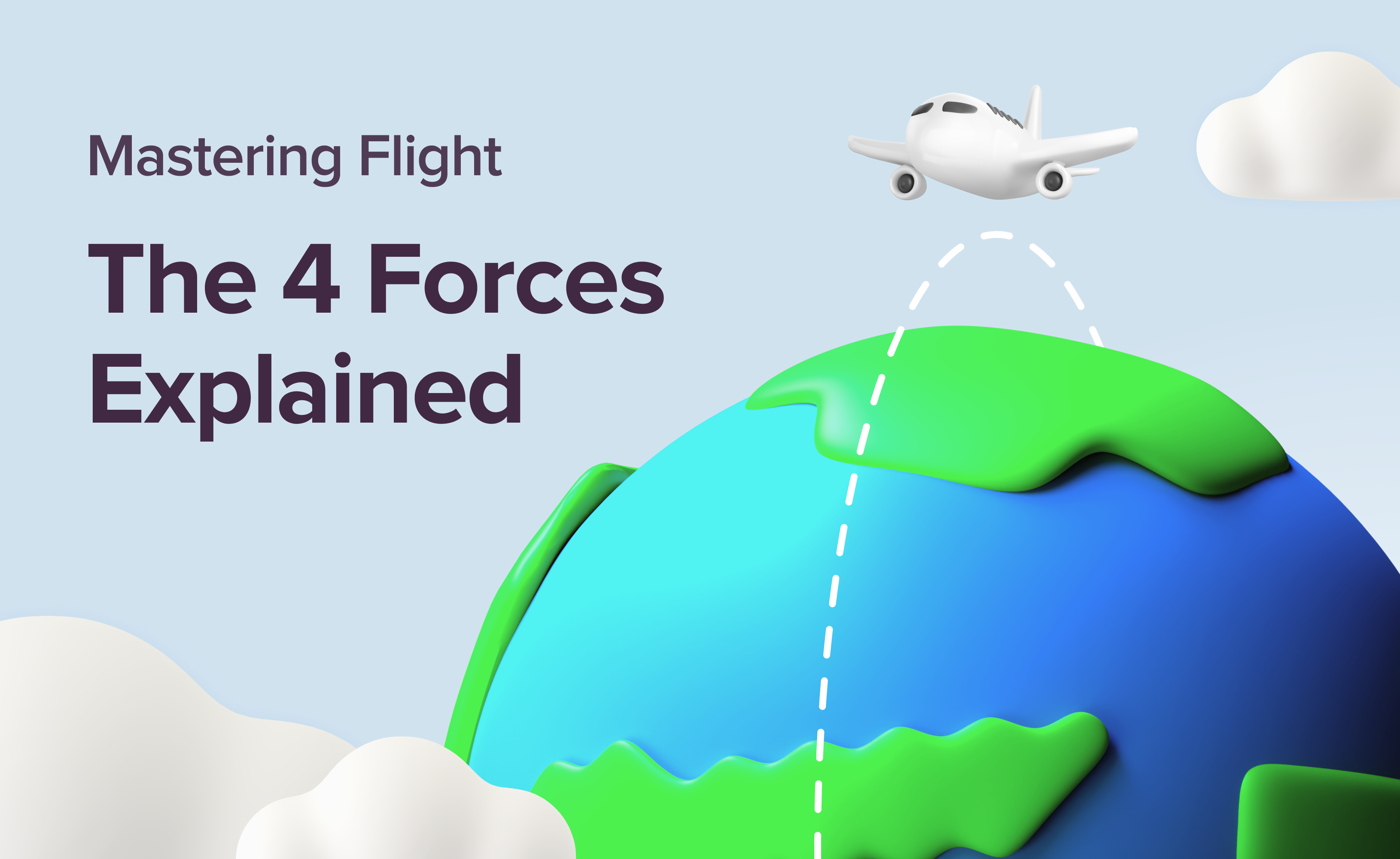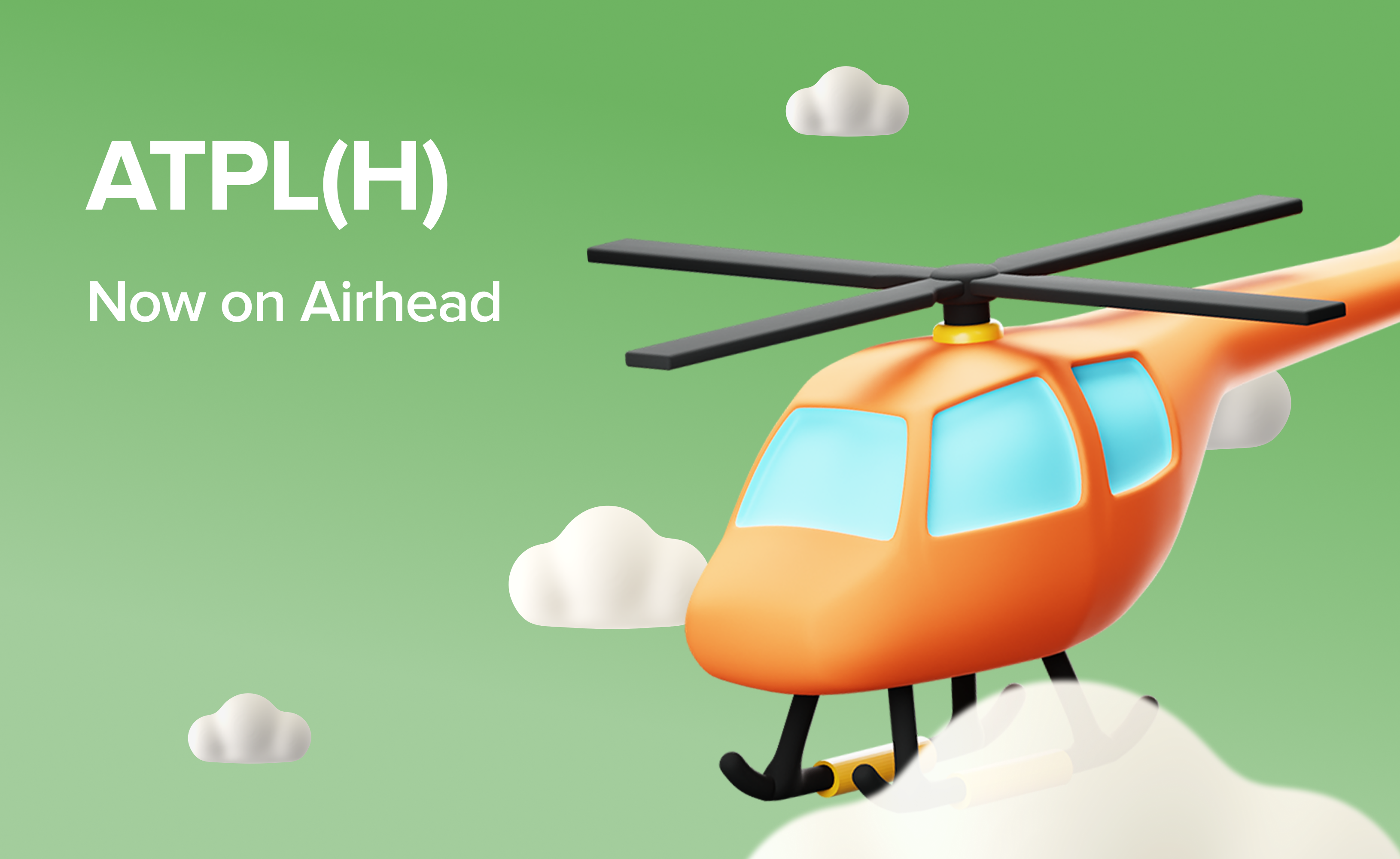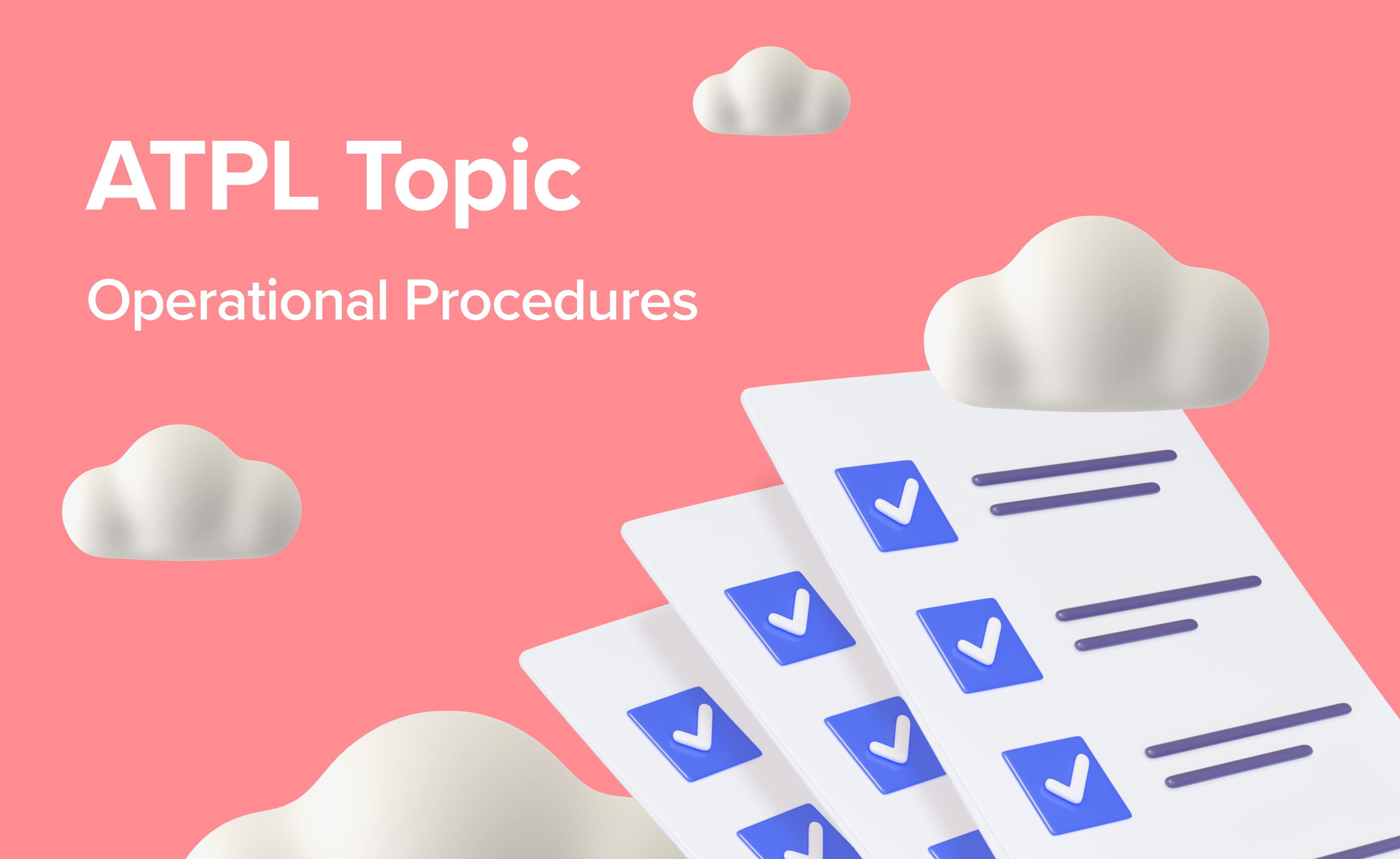From ILS to GNSS: How Modern Air Navigation Works
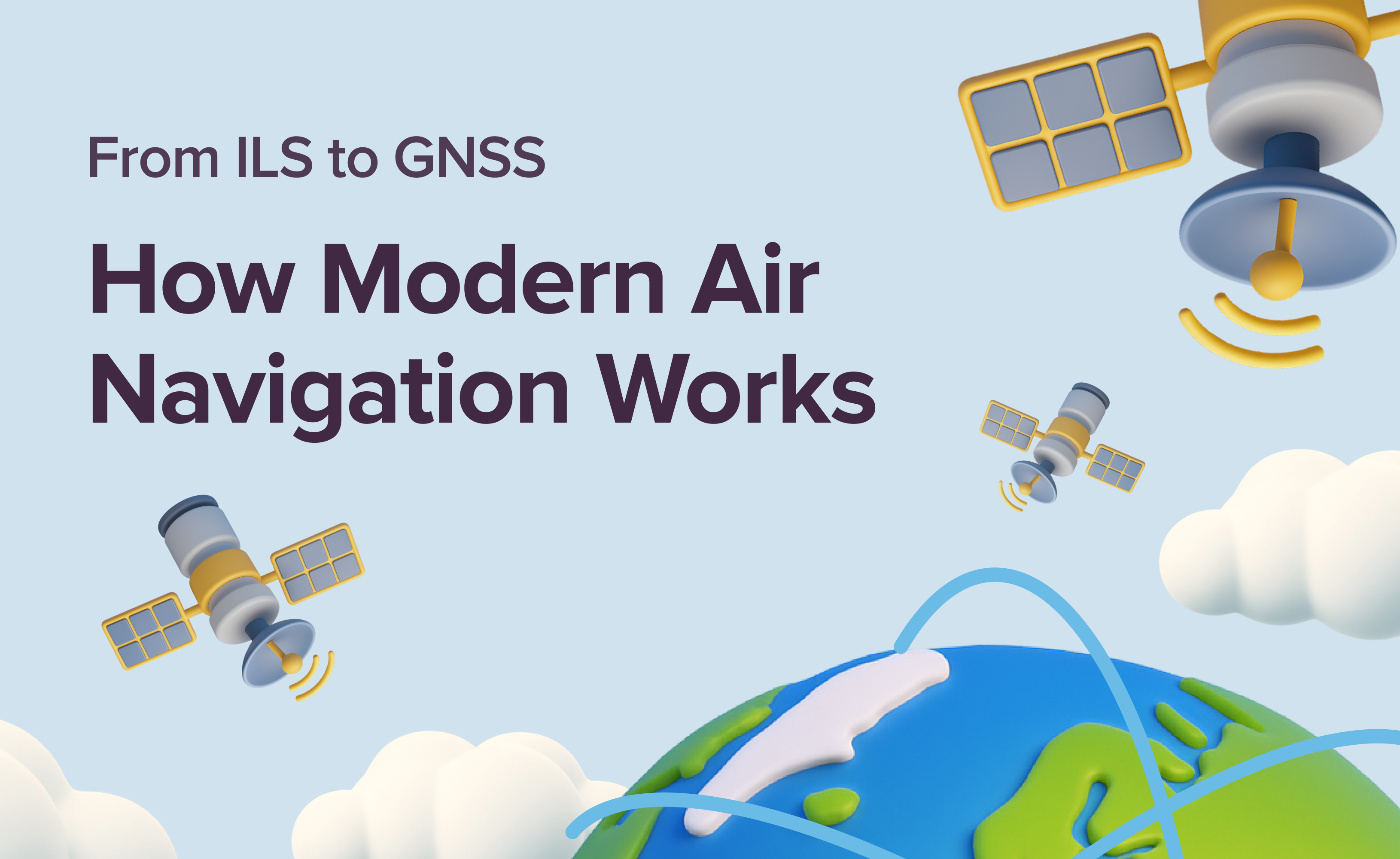
Air navigation has come a long way — from pilots relying on ground-based beacons to today’s precise, satellite-driven systems. While the Instrument Landing System (ILS) still ensures safe landings in the toughest weather, Global Navigation Satellite Systems (GNSS) are shaping the future of aviation.
This article walks you through how navigation evolved from ILS to GNSS, explains augmentation systems like GBAS and SBAS, and shows how modern concepts such as RNAV, RNP, and PBN give pilots unprecedented accuracy and flexibility. Whether you’re studying for the ATPL or just curious about how aircraft “find their way,” this guide breaks it all down.
Explore key subtopics & core concepts of the General Navigation Syllabus
Practise General Navigation questions with Airhead
Instrument Landing System (ILS)
Precision Through Radio Beams
In aviation, the Instrument Landing System (ILS) is a precision radio navigation aid that guides aircraft safely down to the runway, especially at night or in poor weather. In its original design, ILS enabled aircraft to descend to about 200 feet above the ground and half a mile from the runway, a breakthrough that completely transformed safe landings.
The first experimental systems were tested in the United States in the 1930s, and by 1944, the ICAO Chicago Convention officially adopted ILS as the global standard for precision approaches. ILS installations spread worldwide, becoming a fixture at major airports and setting the benchmark for safe, reliable landings in all conditions.
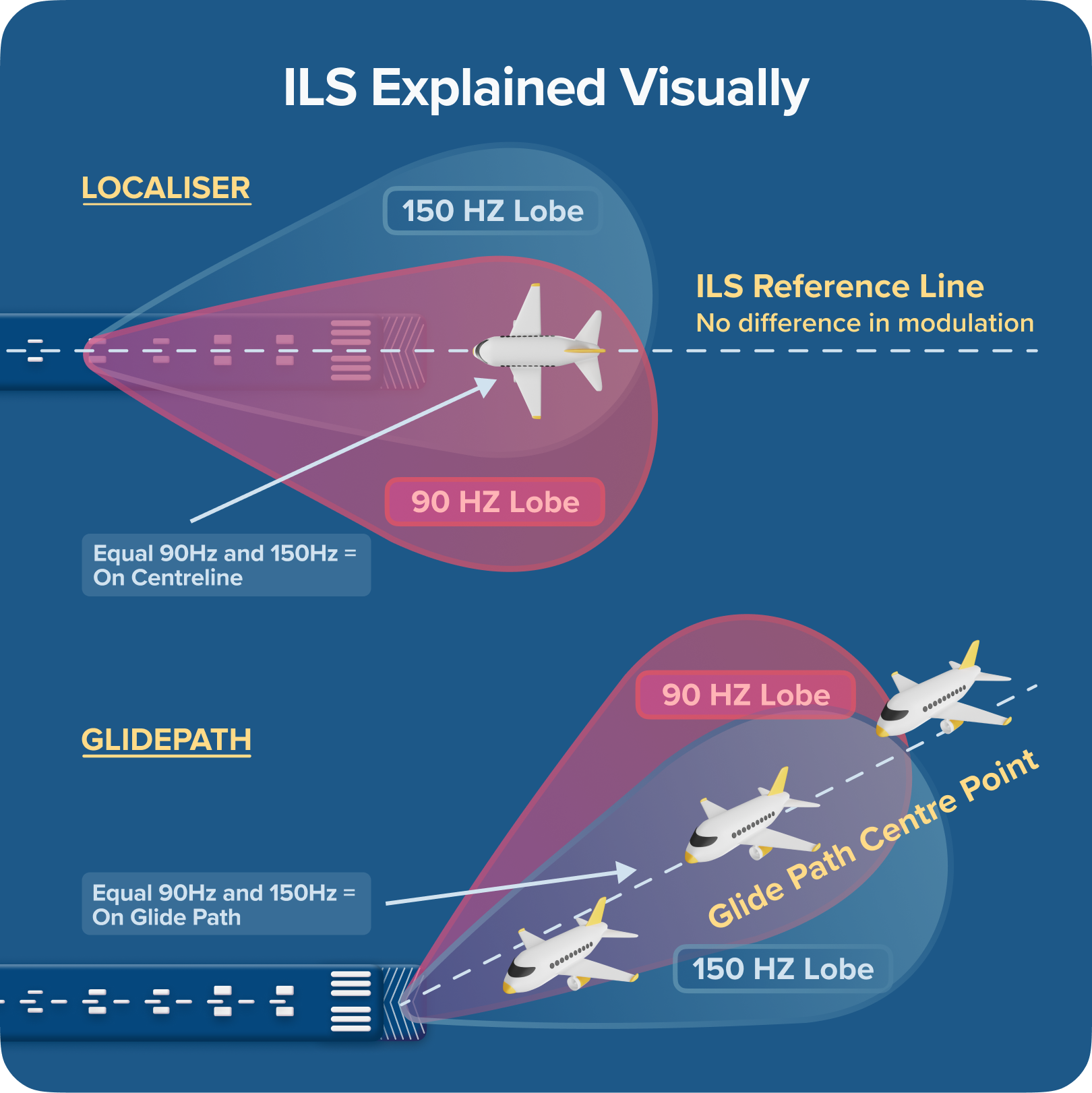
How ILS Works
Localiser (LOC): Provides lateral guidance to keep the aircraft aligned with the runway centreline. Operates in the VHF band (108.10–111.95 MHz, odd tenths only). Its range is around 25nm within ±10° of the centreline and 17nm within ±35° of the centreline.
Glide Path (GP): Gives vertical guidance, typically at a 3° descent angle. Operates in the UHF band (329.30–335.00 MHz). Reliable coverage usually extends up to 10 NM.
Range Information: Traditionally provided by marker beacons (outer, middle, inner markers). Increasingly replaced by DME, which is more flexible and precise.
Together, these components form a three-dimensional path guiding the aircraft safely to touchdown, even when the pilot cannot see the runway until the final moments.
Memory Tip: LOC = Left/Right, GP = Glide Path (Up/Down), Range = How Far.
The Instrument Landing System (ILS) has long been the high standard for low-visibility operations, especially in Category II and III approaches. But this reliability comes with trade-offs. Because it relies on fixed ground infrastructure, each installation is costly, tied to a single runway, and inflexible to redesign. Its signals can be distorted by terrain, buildings, or obstacles, and maintaining accuracy requires continuous calibration and upkeep. On top of that, an ILS can only support one precision approach per runway at a time, which limits capacity at busy airports.
These limitations stand out even more today, when efficiency, scalability, and cost-effectiveness are critical. That’s where Global Navigation Satellite Systems (GNSS) step in, enabling advanced navigation concepts like RNAV, RNP, and Performance-Based Navigation (PBN).
Global Navigation Satellite Systems (GNSS)
New Era of Navigation
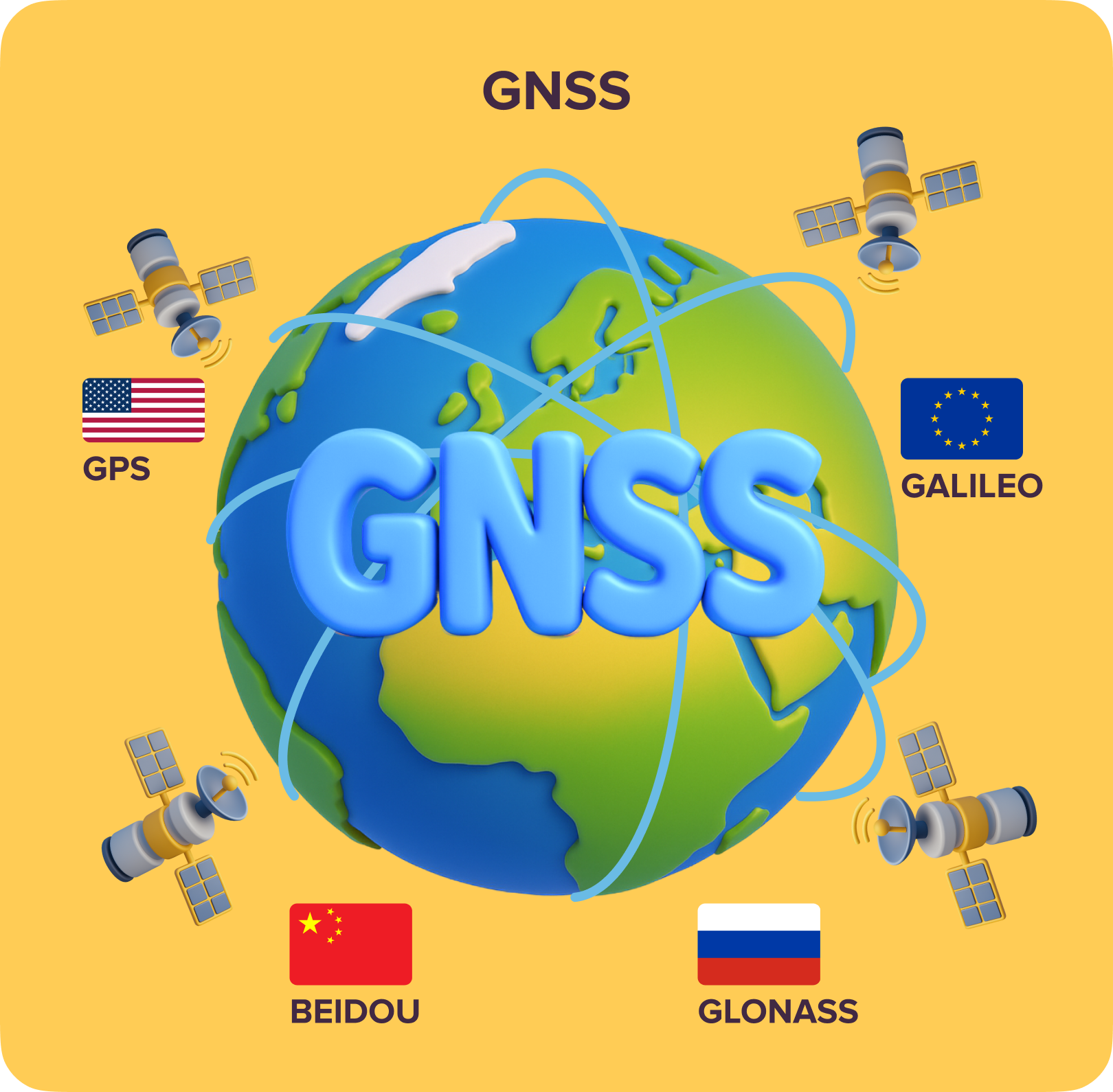
If ILS was aviation’s trusted workhorse of the 20th century, Global Navigation Satellite Systems (GNSS) are its flexible, global upgrade. GNSS uses constellations of satellites orbiting the Earth to provide pilots with precise position, velocity, and time data — anywhere, anytime.
GNSS first entered civil aviation in the 1990s as a tool for en-route navigation and non-precision approaches. Over the following decades, advances like Satellite-Based Augmentation Systems (SBAS) and Ground-Based Augmentation Systems (GBAS) boosted accuracy and integrity, allowing GNSS to rival ILS in precision.
The system is truly global. Four main constellations are in operation:
GPS (USA)
Galileo (European Union)
GLONASS (Russia)
BeiDou (China)
Fly safely across Europe: Our guide, See and Be Seen: Rules for Safe VFR Flying, breaks down the essential VFR rules you must know for confident piloting.
How GNSS Works
At its core, GNSS navigation works by triangulating signals from multiple satellites to pinpoint an aircraft’s exact position. But while standard GNSS is already accurate enough for en-route navigation, it needs an extra layer of correction to become a true precision tool for approaches. That’s where augmentation systems come in.
Satellite-Based Augmentation System (SBAS)

SBAS improves GNSS performance across entire regions by broadcasting correction data via geostationary satellites. These corrections account for errors like ionospheric delays, ensuring highly accurate and reliable position fixes.
Integrity monitoring: If something goes wrong, SBAS can issue an alert in as little as 6 seconds.
Performance: Accuracy improves to within 1–2 meters, supporting advanced approaches like LPV with minima as low as 200 ft.
Examples: WAAS (USA), EGNOS (Europe), MSAS (Japan).
Ground-Based Augmentation System (GBAS)

While SBAS covers wide areas, GBAS delivers pinpoint precision at a specific airport. Using ground stations with known survey coordinates, GBAS corrects satellite signals and transmits them directly to aircraft via a VHF data link.
Approach type: Known as GLS (GBAS Landing System), providing ILS-like precision approaches.
Range: About 20 nautical miles from the ground station.
Alternative names: LAAS (Local Area Augmentation System), LADGPS (Local Area Differential GPS).
Benefit: Offers the same or better accuracy as ILS, but with far more flexibility since it’s not tied to a single runway beam.
With augmentation, GNSS delivers reliable, near-instant precision. Today, most modern IFR-certified aircraft carry GNSS receivers, enabling RNP approaches that can match or even surpass traditional ILS minima at many airports.

However, GNSS is vulnerable to signal jamming and spoofing. It also requires augmentation systems to achieve the high precision required for Category II/III approaches. This is why many operators and authorities remain cautious and the more robust ILS (Instrument Landing System) is still a mandatory requirement at many large airports worldwide.
Test your decision-making skills with 8 challenging scenarios faced by pilots. Read more in our blog "Decision-Making: 8 Key Scenarios for Pilot and see how you'd react.
RNAV, RNP, and Performance-Based Navigation
For decades, airways were built around a network of VOR and DME stations. A VOR (VHF Omnidirectional Range) is a ground-based radio beacon that transmits signals in all directions, allowing aircraft to determine their bearing relative to the station. Paired with it is DME (Distance Measuring Equipment), which measures the slant-range distance between the aircraft and the station.
This system forced aircraft to fly from beacon to beacon, often along zigzag routes that wasted both time and fuel. As air traffic grew and efficiency became critical, the industry needed a smarter system, one not tied to fixed ground beacons.
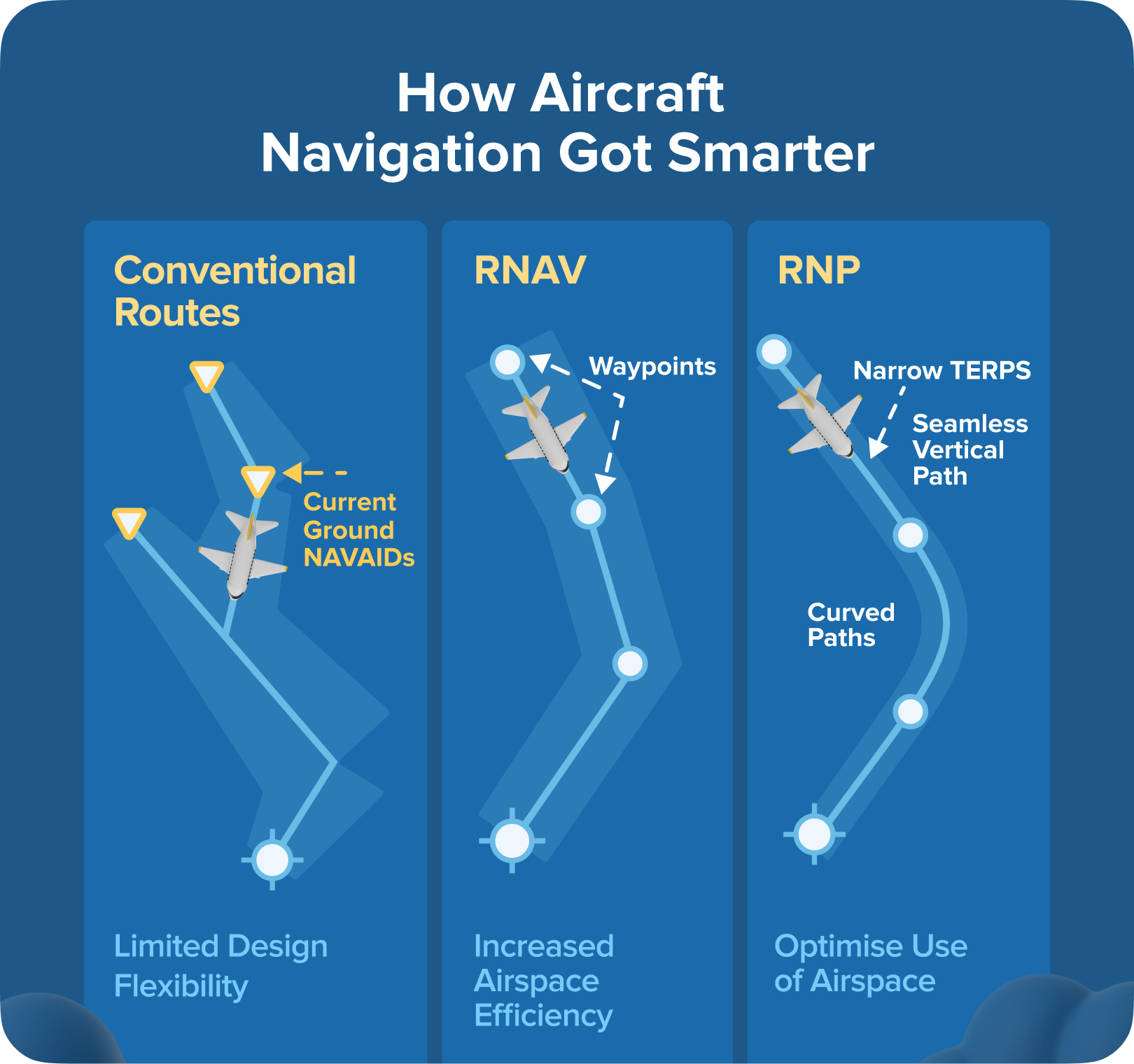
That changed with RNAV (Area Navigation). RNAV allowed aircraft to fly directly between waypoints defined by latitude and longitude, rather than only via ground-based NAVAIDs. To do this, RNAV systems combine data from multiple sensors — VOR/DME, inertial reference systems, and increasingly GNSS — giving aircraft the freedom to fly straighter, more efficient routes.
RNP (Required Navigation Performance) takes RNAV one step further. It doesn’t just allow point-to-point navigation; it continuously monitors accuracy and ensures the aircraft stays within a defined containment area. For example:
This monitoring requirement makes RNP more reliable, safer, and especially valuable in congested or terrain-challenged airspace.
Preparing for your ATPL exam? Learn about the most common pitfalls to avoid in our informative blog post, 10 ATPL Exam Prep Pitfalls to Watch Out For.
The ICAO Performance-Based Navigation (PBN) Framework
RNAV and RNP together form the backbone of ICAO’s Performance-Based Navigation (PBN) concept. Instead of mandating which sensors must be used, PBN focuses on outcomes: the navigation performance required for each phase of flight. Whether an aircraft relies on GNSS, DME/DME, or a mix of sensors doesn’t matter — as long as the required standard is consistently achieved.
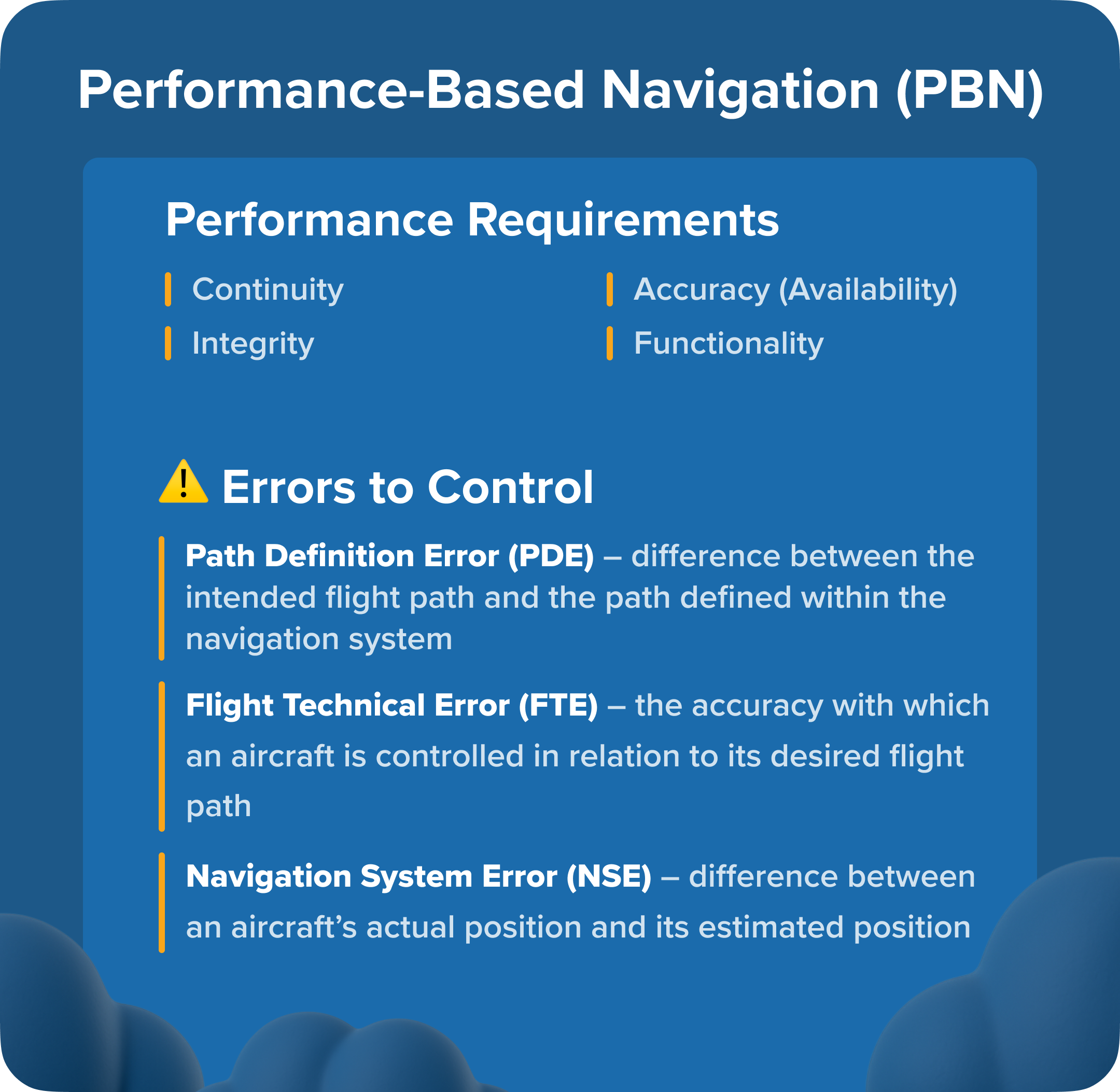
At the heart of PBN are three essential performance requirements, easily remembered with the mnemonic CIA:
C – Continuity. Navigation guidance must remain uninterrupted for the entire phase of flight. Even short losses of signal can affect safety.
I – Integrity. The system must ensure that position data is trustworthy, with the ability to warn pilots within seconds if reliability is lost.
A – Accuracy. The aircraft must stay within a defined tolerance at least 95% of the time, e.g., RNP 1 = within 1 NM, 95% of the time).
Unlike basic RNAV, RNP requires onboard performance monitoring and alerting, ensuring the aircraft continuously meets its navigation accuracy target.
Typical RNP tolerances:
En route: ±5.0 NM (basic) or ±2.0 NM with SBAS support
Terminal: ±1.0 NM
Final Approach: ±0.3 NM
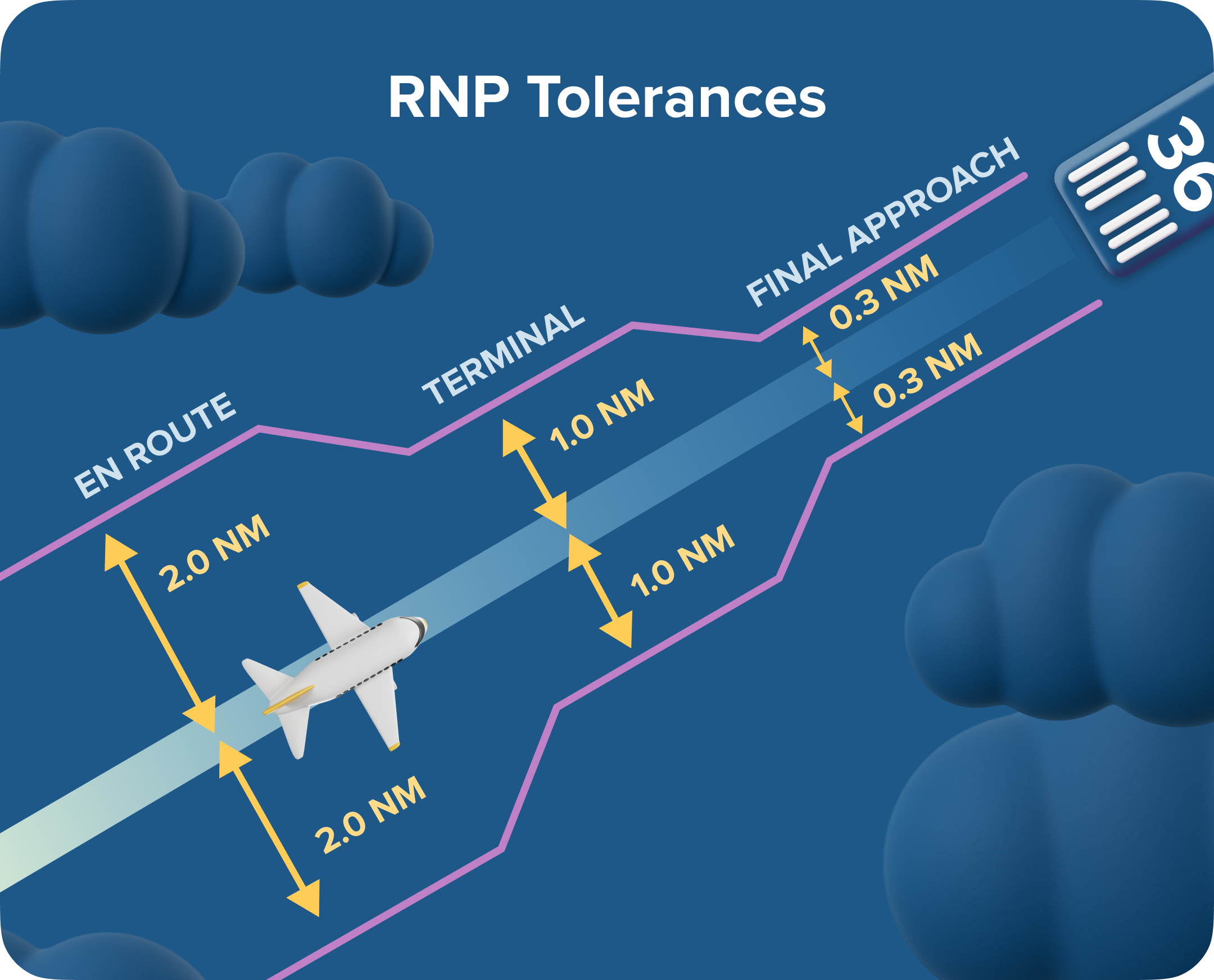
Additional RNP types:
RNP 4 → For oceanic/remote airspace.
RNP AR (Authorization Required) → Allows curved or terrain-challenging procedures.
A-RNP (Advanced RNP) → Flexible capability across all phases of flight.
To achieve this, three main sources of error must be controlled:
PDE (Path Definition Error): A poorly coded or incorrect database path.
FTE (Flight Technical Error): Deviations caused by pilot or autopilot not flying the path precisely.
NSE (Navigation System Error): Position inaccuracies from the sensors themselves.
In short: RNP guarantees consistent accuracy from cruise to final approach.
Master the 15 practical Q&As every student pilot needs to know cold. Read Pilot Know-How: Your 15-Question Cheat Sheet.
Types & Minima of RNP Approaches
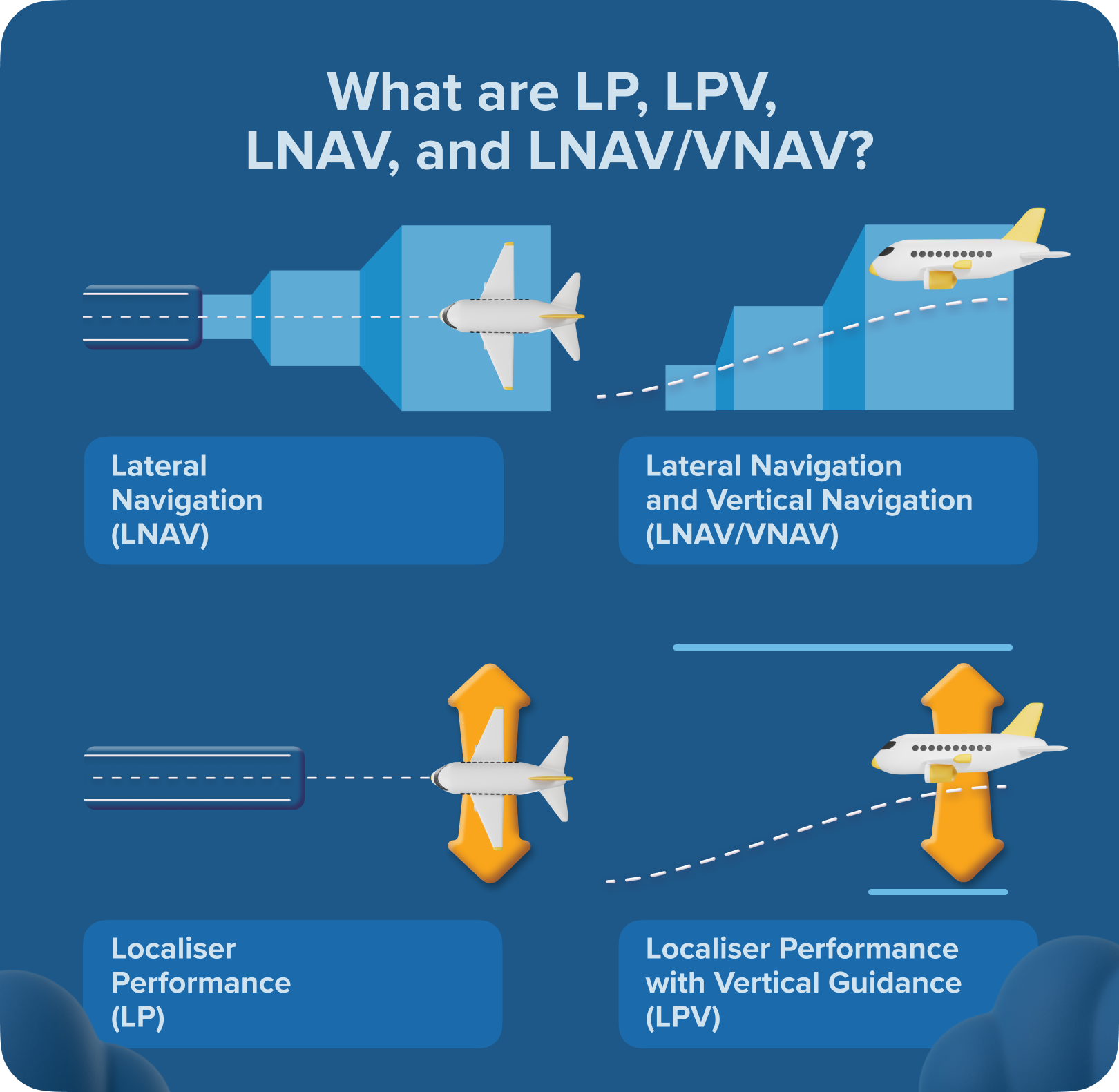
The level of guidance you get — and the minimums you can fly to — depend on the type of procedure and the equipment in your aircraft.
Below is a summary of the four main RNP APCH techniques, represented by side view and top view, with an actual example from Hannover (EDDV).
LNAV (Lateral Navigation): This is the most basic RNP approach. It provides only 2D lateral guidance — no vertical profile. Pilots must fly a constant descent final approach (CDFA) with a planned descent angle. Minima are higher, since there’s no precision vertical path.
LNAV/VNAV (Lateral + Vertical Navigation): Adds a 3D vertical profile, typically via baro-VNAV or a certified SBAS receiver. This brings you lower than LNAV, but there’s a catch: temperature limitations. Cold weather can make barometric inputs less reliable, risking a descent below the intended path. Always check the chart for temperature restrictions.
LP (Localiser Performance): Still a 2D approach, but thanks to SBAS augmentation, you get angular lateral guidance — similar in feel to a localiser. This increases precision laterally, though there’s still no vertical guidance.
LPV (Localiser Performance with Vertical Guidance): The gold standard of GNSS approaches. SBAS provides both lateral and vertical precision, with minima as low as 200 ft DA/H and 0.5 NM visibility — rivalling Category I ILS. Many modern IFR aircraft can fly LPV, and for airports without an ILS, it’s often the best available option.
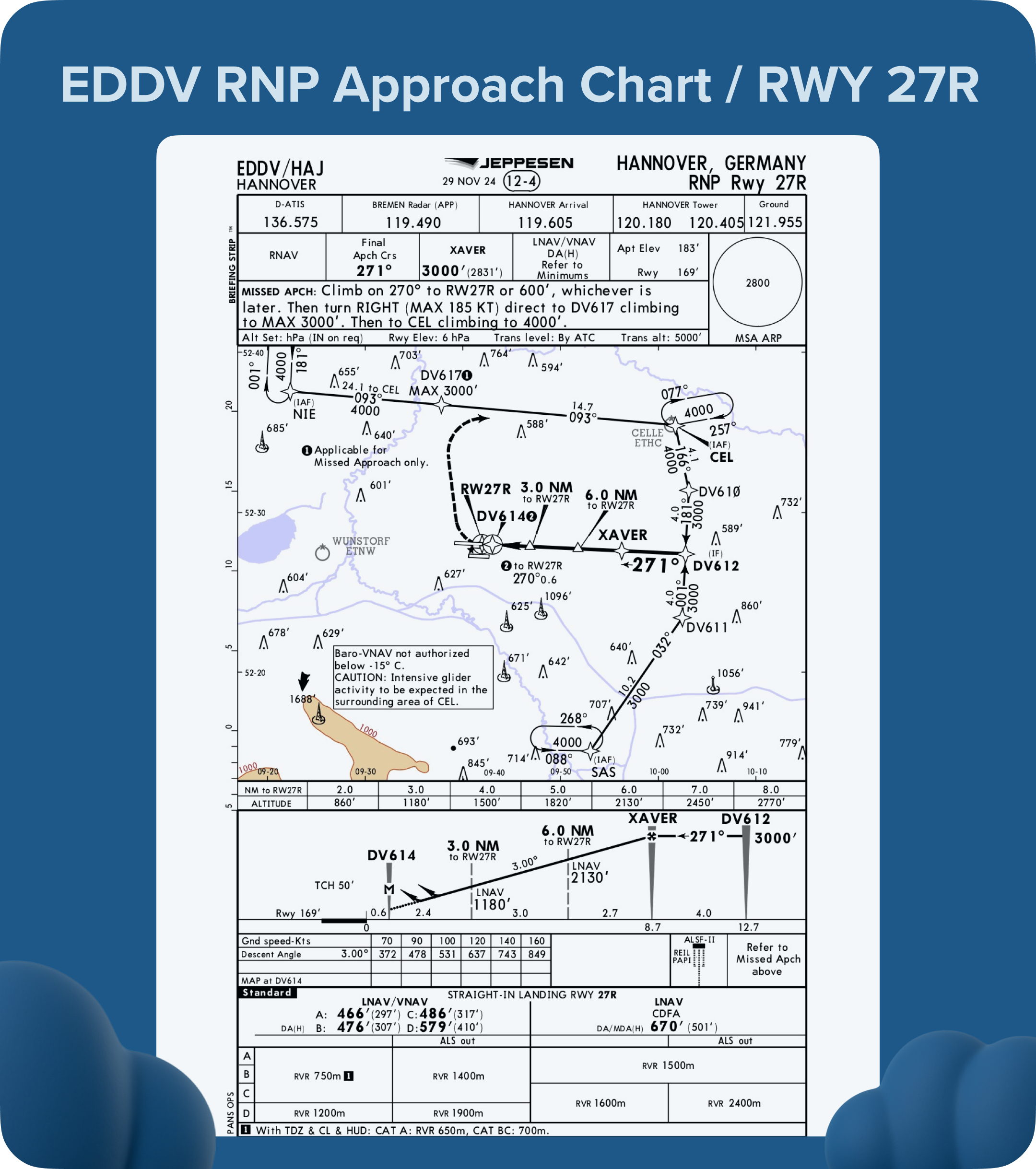
Example: The second image shows the difference between LNAV and LNAV/VNAV on a real chart.On the Hannover (EDDV) RNP approach chart, you can see how LNAV minima sit higher compared to LNAV/VNAV or LPV. This illustrates how each layer of guidance directly translates into safer, lower minimums. Check out the Hannover RNP approach plate for temp restrictions and varying minima, depending on the approach.
In short: LNAV keeps you higher, LNAV/VNAV gets you lower (if conditions allow), LP gives you sharper lateral precision, and LPV delivers near-ILS capability. Before every flight, make sure you brief your equipment capability, minima, and temperature limitations — especially if baro-VNAV is involved.
Discover 10 tried-and-true tips to sharpen your flying skills, boost confidence, and become a safer, smarter pilot.
ICAO Approach Classification
At the end of our guide on how modern air navigation works, let’s zoom out and look at how all these approaches fit into the ICAO classification system. Approaches are grouped by whether they provide vertical guidance and how low they can take an aircraft before a decision must be made.
This diagram shows the split between 2D approaches (non-precision) and 3D approaches. 2D approaches (non-precision, NPA) include legacy systems such as VOR/DME and NDB. They offer only lateral guidance. RNAV and RNP approaches represent a leap forward, bridging the gap by adding both flexibility and, in some cases, vertical guidance. At the top end, ILS and GNSS-based GLS stand as the most precise methods, especially critical in low-visibility operations.
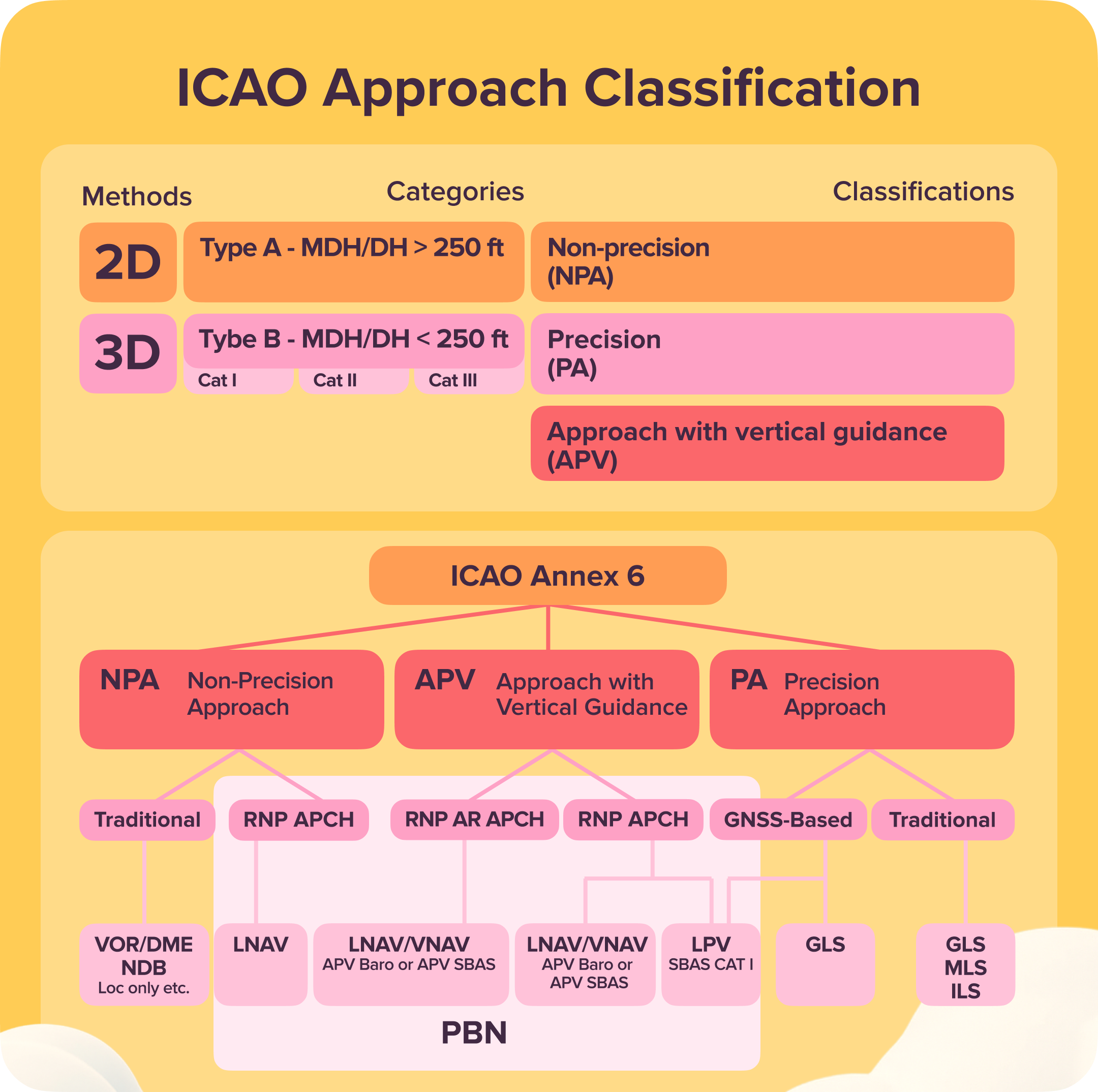
The older ICAO Annex 6 categories of Precision Approaches (PA), Approaches with Vertical Guidance (APV), and Non-Precision Approaches (NPA) may still be mentioned when discussing instrument approaches. Although EASA has since shifted to a more performance-based classification, concentrating on 2D vs. 3D approaches and Type A vs. Type B operations, these terms are still used in some contexts.
A 3D approach offers both lateral and vertical guidance, whereas a 2D approach only offers lateral guidance. Type B operations (CAT I, CAT II, CAT III minima) go below 250 feet, whereas Type A operations have a minimum descent height or decision height of 250 feet or more. They each also have separate RVR minima.
These categories also include Performance-Based Navigation (PBN) procedures. Approaches like LNAV (lateral only), LP (angular lateral guidance), LNAV/VNAV (barometric vertical guidance), and LPV (SBAS-based angular vertical guidance) are all included in the RNP APCH specification. Accordingly, PBN can be applied to all 3D approaches that are APV-equivalent, some 2D approaches, and even some precision approaches like SBAS CAT I.
Airhead's Takeaway

For you as a future airline pilot, the key is to understand why these systems matter:
ILS still rules in the toughest weather.
GNSS and augmentation systems (SBAS, GBAS) give precision almost anywhere.
PBN sets clear performance standards — continuity, integrity, and accuracy.
When you see these concepts in your exams, don’t just memorise — connect them to the real-world picture: safer skies, smarter routing, and a future where you’ll be flying with confidence in any environment.
Mastery comes from daily practice. So put your knowledge to the test — open the Airhead question bank and see how much you really understand from General Navigation.
Subscribe to the AirheadATPL YouTube channel and hit the notification bell for weekly ATPL revision videos with Michal airline pilot. Each video helps you tackle the latest challenging questions from all 13 ATPL subjects, straight from recent EASA ATPL exams.






